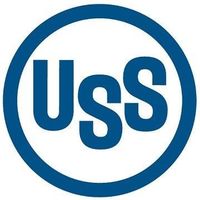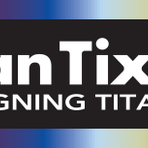Steel Giants Unite: The Trump Effect on Nippon Steel and U.S. Steel
May 28, 2025, 10:11 pm

Location: United States, Pennsylvania, Pittsburgh
Employees: 10001+
Founded date: 1901
Total raised: $240M
In the world of steel, a seismic shift is underway. Nippon Steel, Japan's titan in the industry, is on the verge of a monumental acquisition. The stakes? A $14.9 billion bid for U.S. Steel. The catalyst? A nod of approval from none other than former President Donald Trump. This union of steelmakers is more than just a business deal; it’s a dance of geopolitics, economics, and market speculation.
The news broke like a thunderclap. On May 24, 2025, Trump took to Truth Social, offering his blessing for the partnership. His words were a lifeline, a signal that the merger was not just a pipe dream. Investors reacted with fervor. U.S. Steel shares surged by 21%. It was as if a dormant volcano had erupted, sending shockwaves through the market.
Nippon Steel’s shares followed suit. On May 26, they climbed 5% in Tokyo, reaching 3,025 yen. The excitement was palpable. The stock was untraded for a time, overwhelmed by a flood of buy orders. It was the biggest percentage gainer on the Nikkei 225 index that day. Investors were hungry for a piece of the action, eager to ride the wave of optimism.
But what does this merger mean? At its core, it’s about jobs and economic growth. Trump’s endorsement emphasized the potential benefits for the American workforce. A partnership between these two steel giants could create thousands of jobs. It’s a promise of prosperity, a beacon of hope in a challenging economic landscape.
Yet, the implications stretch beyond the immediate economic benefits. This deal represents a strategic alliance between two countries. Steel is not just a commodity; it’s a cornerstone of industry. It’s the backbone of construction, manufacturing, and infrastructure. By joining forces, Nippon Steel and U.S. Steel could reshape the landscape of the steel industry.
The timing of this deal is crucial. The global steel market is in flux. Demand is rising, driven by infrastructure projects and a rebound in manufacturing. However, competition is fierce. Countries like China and India are major players, flooding the market with cheap steel. This merger could provide a competitive edge, allowing Nippon and U.S. Steel to leverage their combined resources and expertise.
Moreover, the partnership could lead to innovation. By pooling research and development efforts, the two companies could drive advancements in steel production. This could result in more sustainable practices, reducing the environmental impact of steel manufacturing. In an era where sustainability is paramount, this could be a game-changer.
However, not everyone is on board. Critics argue that such a merger could lead to monopolistic practices. They fear that reduced competition might drive prices up, hurting consumers. Regulatory bodies will undoubtedly scrutinize the deal. The path to completion is fraught with challenges, and the approval process will be closely watched.
The market’s reaction is a testament to the deal’s potential. Investors are betting on a brighter future. The surge in U.S. Steel’s stock reflects a collective belief that this partnership will succeed. It’s a gamble, but one that many are willing to take.
As the days unfold, the narrative will evolve. Analysts will dissect every move, every statement from both companies and the government. The merger will be a focal point in discussions about the future of the steel industry. It’s a story of ambition, risk, and the quest for dominance in a global market.
In the grand scheme, this merger is a microcosm of larger trends. It highlights the interconnectedness of global economies. What happens in one corner of the world can reverberate across oceans. The steel industry is a prime example of this dynamic.
As Nippon Steel and U.S. Steel navigate the complexities of this partnership, they will face both opportunities and obstacles. The road ahead is uncertain, but the potential rewards are immense. The stakes are high, and the world is watching.
In conclusion, the proposed merger between Nippon Steel and U.S. Steel is more than just a business transaction. It’s a strategic alliance that could reshape the steel industry. With Trump’s endorsement, the deal has gained momentum, igniting investor enthusiasm. As the story unfolds, it will be a fascinating journey to witness. The steel giants are poised to make their mark, and the world is eager to see what comes next.
The news broke like a thunderclap. On May 24, 2025, Trump took to Truth Social, offering his blessing for the partnership. His words were a lifeline, a signal that the merger was not just a pipe dream. Investors reacted with fervor. U.S. Steel shares surged by 21%. It was as if a dormant volcano had erupted, sending shockwaves through the market.
Nippon Steel’s shares followed suit. On May 26, they climbed 5% in Tokyo, reaching 3,025 yen. The excitement was palpable. The stock was untraded for a time, overwhelmed by a flood of buy orders. It was the biggest percentage gainer on the Nikkei 225 index that day. Investors were hungry for a piece of the action, eager to ride the wave of optimism.
But what does this merger mean? At its core, it’s about jobs and economic growth. Trump’s endorsement emphasized the potential benefits for the American workforce. A partnership between these two steel giants could create thousands of jobs. It’s a promise of prosperity, a beacon of hope in a challenging economic landscape.
Yet, the implications stretch beyond the immediate economic benefits. This deal represents a strategic alliance between two countries. Steel is not just a commodity; it’s a cornerstone of industry. It’s the backbone of construction, manufacturing, and infrastructure. By joining forces, Nippon Steel and U.S. Steel could reshape the landscape of the steel industry.
The timing of this deal is crucial. The global steel market is in flux. Demand is rising, driven by infrastructure projects and a rebound in manufacturing. However, competition is fierce. Countries like China and India are major players, flooding the market with cheap steel. This merger could provide a competitive edge, allowing Nippon and U.S. Steel to leverage their combined resources and expertise.
Moreover, the partnership could lead to innovation. By pooling research and development efforts, the two companies could drive advancements in steel production. This could result in more sustainable practices, reducing the environmental impact of steel manufacturing. In an era where sustainability is paramount, this could be a game-changer.
However, not everyone is on board. Critics argue that such a merger could lead to monopolistic practices. They fear that reduced competition might drive prices up, hurting consumers. Regulatory bodies will undoubtedly scrutinize the deal. The path to completion is fraught with challenges, and the approval process will be closely watched.
The market’s reaction is a testament to the deal’s potential. Investors are betting on a brighter future. The surge in U.S. Steel’s stock reflects a collective belief that this partnership will succeed. It’s a gamble, but one that many are willing to take.
As the days unfold, the narrative will evolve. Analysts will dissect every move, every statement from both companies and the government. The merger will be a focal point in discussions about the future of the steel industry. It’s a story of ambition, risk, and the quest for dominance in a global market.
In the grand scheme, this merger is a microcosm of larger trends. It highlights the interconnectedness of global economies. What happens in one corner of the world can reverberate across oceans. The steel industry is a prime example of this dynamic.
As Nippon Steel and U.S. Steel navigate the complexities of this partnership, they will face both opportunities and obstacles. The road ahead is uncertain, but the potential rewards are immense. The stakes are high, and the world is watching.
In conclusion, the proposed merger between Nippon Steel and U.S. Steel is more than just a business transaction. It’s a strategic alliance that could reshape the steel industry. With Trump’s endorsement, the deal has gained momentum, igniting investor enthusiasm. As the story unfolds, it will be a fascinating journey to witness. The steel giants are poised to make their mark, and the world is eager to see what comes next.
